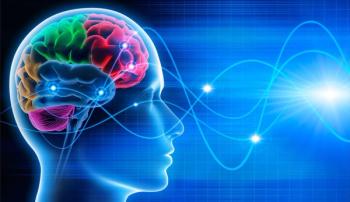
Senses in Primary Care Top 10: The Eyes Have It
Diseases of the nervous system and sense organs-particularly eye and ear disorders-are prime diagnoses that bring patients to your primary care practice.
Checking the Eyes and Ears of Primary Care Visits
Of more than 1.25 billion ambulatory care visits to physician offices and hospital outpatient and emergency departments in the United States in 2009-2010, 106 million visits (8.5%) were for diseases of the nervous system and sense organs. More than 30 million of these visits were to primary care offices. The main diagnostic reasons for primary care visits in this category, as a group, were eye disorders. Another leading reason: ear disorders.
This is the sixth article in a series on top 10 diagnostic categories in primary care practice. In the first article, we summarized the leading diagnostic categories in primary care and how they may affect your practice. Subsequent articles provided more details on each of the top 4 diagnostic categories: respiratory, circulatory, endocrine, and musculoskeletal. This article addresses the number 5 diagnostic category, diseases of the nervous system and sense organs.
Find out more about the fifth leading reason for primary care visits in the pages that follow.
Surgical Specialists See Most Nervous System and Sense Organ Visits
• In 2009-2010, patients paid
• Just over 50 million visits (47%) were to surgical specialty offices, the most frequently visited setting for these disorders.
• Just under 13 million visits (12%) were to medical specialty offices.
• Hospital outpatient departments and hospital emergency departments each accounted for more than 6 million visits and roughly 6% of total visits.
Leading Diagnoses: The Eyes Are on Top
• Collectively, eye disorders accounted for more than 49 million of total visits, making them the leading diagnoses within the nervous system and sense organs diagnostic category.
• Cataracts were the reason for 10 million visits; glaucoma, about 9 million visits; retinal disorders, 6 million; conjunctivitis, close to 5 million; “other disorders of the eye and adnexa,” about 12 million.
• Primary care offices saw more than half of cataracts visits.
Otitis Media Is Number 1 Specific Diagnosis
• More than 29 million visits in the nervous system and sense organs category were for ear disorders. Diagnoses included “otitis media and eustachian tube disorders,” “disorders of external ear,” and “other disorders of the ear and mastoid process.”
• Otitis media and eustachian tube disorder diagnoses accounted for the most total ambulatory care visits (18.5 million) and most primary care visits (11.5 million) in the nervous system and sense organs category.
• Primary care offices saw more than 62% of the total visits for otitis media and eustachian tube disorders.
Migraine Draws Patients to Primary Care
•
• Migraines occur in more than 37 million Americans, an estimated 13% of the US population; 2 to 3 million persons have chronic migraine. Almost 5 million experience at least 1 migraine attack per month.
• More than 70% of persons with migraine have a family history of migraine. Close to 70% have consulted a physician at some time to seek treatment for migraine pain.
• In almost half of cases of migraine, the diagnosis has not been made. Close to 50% of persons who have symptoms that meet the guidelines for a diagnosis of migraine thought they had a tension headache, a sinus headache, or another type of headache.
• The most frequently reported migraine symptoms are throbbing and pulsating pain, light sensitivity, sound sensitivity, nausea, pain on one side, vision changes and blurred vision, aura, and vomiting.
Bringing Eye Disorders Into Focus: Some Specifics
• Overview: Number of
• Cataract: Risk increases with age. Other risk factors: certain diseases, such as diabetes; personal behavior, such as smoking; the environment, such as prolonged sunlight exposure. Most common symptoms: cloudy or blurry vision, colors seem faded, glare, poor night vision, double vision.
• Glaucoma: At first, open-angle glaucoma has no symptoms. Without treatment, patients slowly lose peripheral vision. Central vision may decrease until no vision remains. Glaucoma is detected through a comprehensive dilated eye exam that includes a visual acuity test, a visual field test, and tonometry.
• Diabetic retinopathy: All persons with type 1 or type 2 diabetes are at risk; 40% to 45% of Americans with diabetes have some stage of diabetic retinopathy. Persons with proliferative retinopathy can reduce their risk of blindness by 95% with timely treatment and appropriate follow-up care.
Otitis Media and Other Ear Issues
• About 2 or 3 of every 1000 children in the United States are born with a detectable level of
• About 15% of American adults aged 18 years or older report some hearing difficulty; 1 in 8 persons in the United States aged 12 years or older has hearing loss in both ears.
• Disabling hearing loss occurs in about 2% of adults aged 45 to 54 years, 8.5% of adults aged 55 to 64 years, nearly 25% of those aged 65 to 74 years, and 50% of persons 75 years or older.
• About 15% of Americans aged 20 to 69 years have high-frequency hearing loss because of exposure to noise at work or during leisure activities. Roughly 10% of the US adult population has experienced tinnitus that lasted at least 5 minutes in the past year.
• Fewer than 30% of adults aged 70 years or older who have hearing loss and could benefit from hearing aids have ever used them.
• Vestibular and balance disorder: 90 million cases
• Pain (chronic), spinal cord Injuries, phantom limb pain: 64 million
• Developmental disorders: 48.6 million
• Migraines/cluster headaches: 45 million
• Tinnitus (severe): 42.8 million
• Dyslexia and other learning disorder: 40 million
• Postherpetic neuralgia: 39 million
• Neuromuscular diseases: 28.3 million
• Deaf or partially deaf: 27 million
More Common Brain and Nervous System Conditions
• Bipolar disorder: 23 million cases
• Depression (major): 19.9 million
• Anxiety disorders: 19.1 million
• ADHD: 17.4 million
• Macular degeneration: 15 million
• Restless leg syndrome: 14.5 million
• Substance abuse disorders (severe): 13.9 million
• Blindness and visual impairments: 10 million
• Diabetic neuropathy: 9.5 million
And Still More Brain and Nervous System Conditions
• Fibromyalgia: 6 million cases
• Brain or head injuries (traumatic): 5.3 million
• Anorexia, bulimia, and binge disorders: 5.2 million
• Stroke: 4.7 million
• Autism: 4.6 million
• Alzheimer disease: 4.5 million
• Epilepsy: 2.3 million
• Parkinson disease: 1.5 million
• Narcolepsy and sleep disorders: 1.4 million
Top 10 Recap
• In the first article in this series, “
• In the second article, we highlighted the number 1 diagnostic category in primary care,
• In the third article, we featured the number 2 diagnostic category,
• The fourth article covered the third leading diagnostic category in primary care,
• In the fifth article, we reported on
Newsletter
Enhance your clinical practice with the Patient Care newsletter, offering the latest evidence-based guidelines, diagnostic insights, and treatment strategies for primary care physicians.

















































































































































































































































































